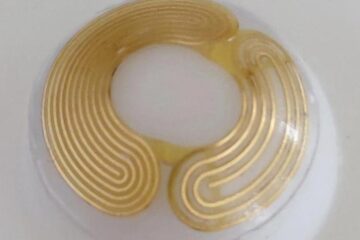Day blindness in the wirehaired dachshund

His findings are of comparative interest for the corresponding disease in people.
Inherited photoreceptor diseases (diseases of the sensitive cells of the retina) occur naturally in both people and dogs. They comprise the most common form of inheritable retinal diseases in people, with an incidence of about 1 in 4,000. The most common form of retinal degeneration in people is that collectively called retinitis pigmentosa (RP), which is caused by an initial regression of the rods of the retina followed by a regression of the cones.
In dogs, the inheritable photoreceptor diseases are generally lumped under the name of progressive retinal atrophy or PRA. Using clinical, electrophysiological and morphological studies, Ropstad showed that the dogs in one colony of day blind wirehaired dachshunds never developed normal sight in daylight and that this was due to defective development of the cones of the retina.
In affected dogs, the retina’s rods, which are principally responsible for night vision, first show an increase in activity, before they too gradually weaken as the animal gets older. Ropstad showed that several structures in the inner layers of the retina are also affected at an early stage of the disease, in addition to the photoreceptors. Genetic studies are presently being carried out to find the gene that causes the condition.
Ropstad discovered that pupil size is abnormal in a majority of young, day blind dachshunds. These findings can be used as a clinical indicator of day blindness in young dogs with vision disturbance.
In people, day blindness is a rare, although incapacitating, condition. It often strikes young people and there is no treatment. Through his description of day blindness in the dog, Ropstad has paved the way for the development of a dog model for the treatment of comparable retinal disorders in both man and dog.
Cand. med. vet. Ernst-Otto Ropstad defended his Dr. Med. Vet. thesis with the title “Dayblindness in the Standard wire haired dachshund”, at the Norwegian School of Veterinary Science, on February 26, 2008.
Media Contact
All latest news from the category: Life Sciences and Chemistry
Articles and reports from the Life Sciences and chemistry area deal with applied and basic research into modern biology, chemistry and human medicine.
Valuable information can be found on a range of life sciences fields including bacteriology, biochemistry, bionics, bioinformatics, biophysics, biotechnology, genetics, geobotany, human biology, marine biology, microbiology, molecular biology, cellular biology, zoology, bioinorganic chemistry, microchemistry and environmental chemistry.
Newest articles

NASA selects UF mission to better track the Earth’s water and ice
NASA has selected a team of University of Florida aerospace engineers to pursue a groundbreaking $12 million mission aimed at improving the way we track changes in Earth’s structures, such…

‘Smart’ contact lenses could someday enable wireless glaucoma detection
Most people with early-stage glaucoma don’t know they have it, even though early treatment is key to reducing vision loss. While detecting a subtle increase in eye pressure helps doctors…

New tech may lead to smaller, more powerful wireless devices
Good vibrations… What if your earbuds could do everything your smartphone can do already, except better? What sounds a bit like science fiction may actually not be so far off….





















